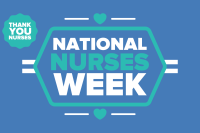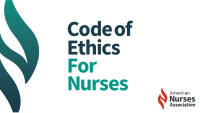Leverage existing and emerging tools to help address this persistent nursing challenge.


Artificial intelligence (AI) can help identify signs of staff burnout by using a range of methods and tools, each with its own merits. The demands of patient care coupled with the hurried healthcare environment create a dangerous mix for nurses trying to stay mentally and physically healthy. To support their workforce, healthcare organizations can use several AI technologies to predict whether burnout might be affecting staff before it becomes visibly apparent.
Start by tapping the data sources used every day. For instance, AI can scan staffing and scheduling records to analyze patterns of overtime, frequency of sick leave, and other workload-related data. Organizations must consistently evaluate patient-to-staff ratios; high ratios may indicate that staff members are spread too thin, which increases the risk of burnout. Look at the patient acuity of a nurse’s workload. Several studies have noted that a sustained high number of complex or critical cases can lead to stress and burnout. Subtle trends in some performance indicators—such as increased error rates, reduced patient interaction time, or frequent tardiness—also may suggest burnout.
Some organizations are exploring the use of AI coupled with employee engagement and satisfaction surveys. Surveys typically are anonymous, but natural language processing can help interpret open-ended survey responses to look for signs of stress or discontent among an entire group in a specific nursing unit or department.
Artificial intelligence in nursing
How artificial intelligence is transforming the future of nursing
Many hospital human resource (HR) departments have dedicated personnel who scan social media for a number of issues, such as code of conduct violations, but they may not be looking for signs of burnout. With the appropriate ethical considerations and permissions in place, HR teams can use AI to monitor and analyze public social media activity of staff for indications of burnout. In addition, text analytics and sentiment analysis applied to written or spoken communication can help gauge emotional tone, which may indicate stress or burnout.
Don’t forget to use your wearable devices as your own personal feedback source. Biofeedback from smartwatches or similar devices can provide data on your stress levels, sleep quality, and other health metrics, which you can use to self-correct issues before they become real problems.
Machine learning models are being trained to predict burnout based on various factors, including workload, hours worked, and personal well-being metrics. This predictive analytics approach may prove one of the most valuable strategies for identifying the drivers of burnout and implementing interventions before it occurs.
As your organization develops a plan to use AI for predicting burnout and stress among staff, remember data privacy. Any AI system must comply with privacy laws and ethical guidelines as well as organizational policy. In addition, plan implementation requires interprofessional collaboration, especially with information technology, HR, and organizational leaders. The good news for nurses? Interprofessional education and practice are well-established competencies. AI offers a versatile approach to identifying staff burnout by analyzing myriad data points that human observation alone may not easily find. With careful implementation that respects AI’s benefits and limitations, this technology can serve as a powerful tool in efforts to improve workforce safety, well-being, satisfaction, and engagement.


Lillee Gelinas, DNP, RN, CPPS, FAAN
Editor-in-Chief
American Nurse Journal. 2023; 18(11). Doi: 10.51256/ANJ112304


















